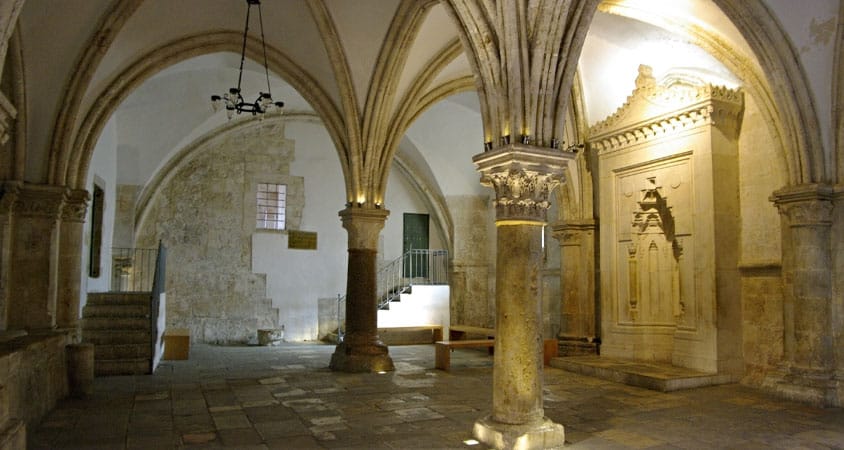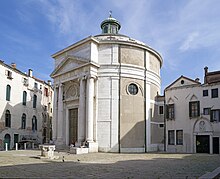Just outside the Old City of Jerusalem on Mount Zion is the Upper Room, or the Cenacle. This structure has been regarded as the traditional site of the Last Supper since the fourth century AD.
According to scripture, the Upper Room is where the Last Supper took place and where Jesus washed His disciples’ feet (John 13:1–20). It is where the disciples gathered in fear after the death of Jesus. Jesus appeared in this room on two occasions after the Resurrection. It is here He showed Thomas the wounds in His body. It is where the 120 believers prayed on the Day of Pentecost. The Bible tells us that tongues of fire appeared to them and they were all filled with the Holy Spirit and began to speak in other languages (Acts 2:1-4). At this place the church of Jesus Christ was born.
Built atop a church-synagogue constructed in the first century AD, the current structure of the room is a restoration of a 12th century Crusader chapel. It is here that archaeologists have uncovered plaster fragments inscribed with Greek graffiti, one of which has been interpreted to contain the name of Jesus.
With all of its classic Crusader-era trappings, the room is mostly empty. Visitors can descend the stairs in the southwest corner of the room, leading to the Tomb of King David or ascend the staircase to the rooftop to encounter breathtaking views of the Mount of Olives and the city of Jerusalem.
While the Cenacle is not universally accepted as the Upper Room, it still remains a much sought-after destination for many Christians who travel to the Holy Land.
Plan your next visit to Jerusalem and the Upper Room with Israel Advantage Tours! Contact Cindy at cindy@israeladvantagetours.com or visit www.israeladvantagetours.com.




